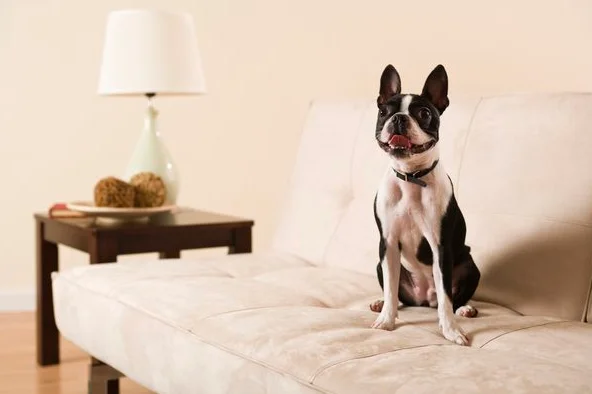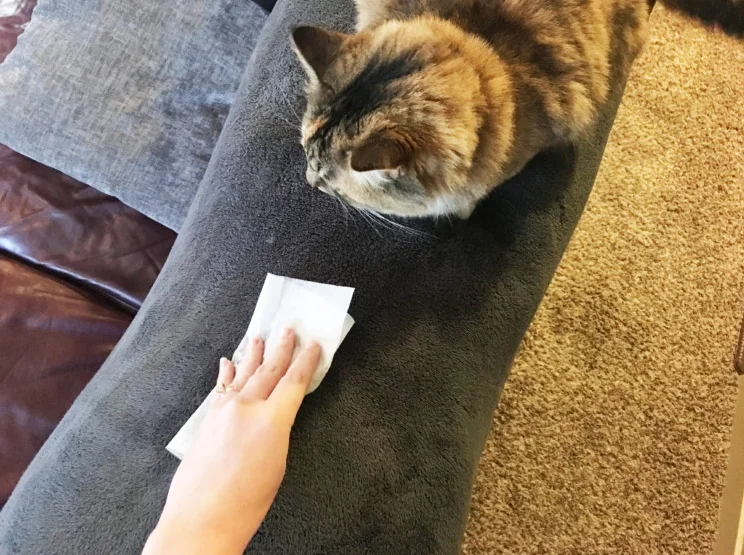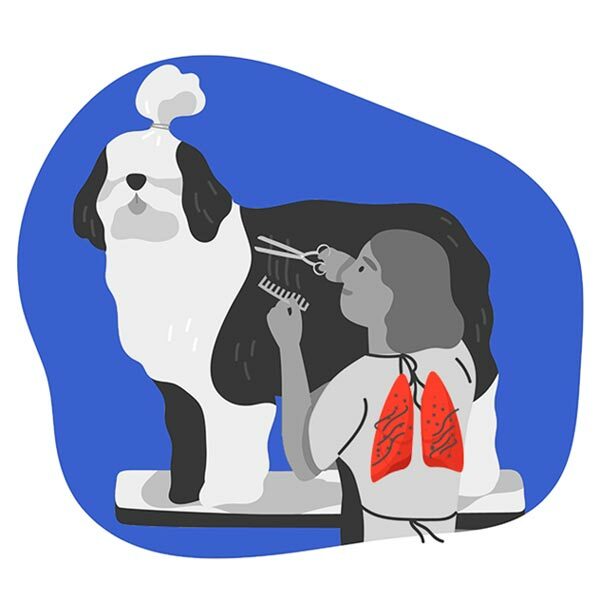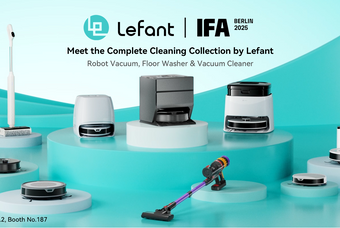We all adore our furry companions, but let's face it, pet hair can be a significant issue in our homes. While we cherish the unconditional love and joy pets bring into our lives, we often overlook the impact of pet hair on our home environment. Understanding and managing pet hair is crucial for maintaining a healthy and clean living space. Let's dive into the ways pet hair can affect our homes and how we can tackle this furry problem.
Understanding Pet Hair
What is Pet Hair?
Pet hair, or fur, is the soft, dense hair that covers the bodies of animals. It plays a crucial role in protecting pets from the elements and regulating their body temperature.
Why Pets Shed Hair?
Shedding is a natural process for pets. It helps them get rid of old or damaged hair, making way for new, healthy growth. Factors like breed, age, health, and the time of year can influence shedding patterns.
Common Pets That Shed Hair
Dogs, cats, rabbits, and even some rodents are common pets that shed hair. Breeds like Golden Retrievers, Siberian Huskies, and Maine Coon cats are known for their heavy shedding.
Seasonal Shedding vs. Constant Shedding
Some pets shed heavily during certain seasons, typically in spring and fall, while others may shed consistently throughout the year. Understanding your pet's shedding pattern can help you manage it better.
The Impact of Pet Hair on Health
Allergic Reactions
Pet hair can trigger allergic reactions in some people. It's not the hair itself but the dander, saliva, and urine that stick to the hair that causes allergies.
Common Allergens Found in Pet Hair
Pet hair can carry allergens like dander (tiny flakes of skin), saliva, and even urine residue. These allergens can be potent triggers for those with sensitivities.
Symptoms of Pet Hair Allergies
Common symptoms include sneezing, runny or stuffy nose, itchy or watery eyes, and skin rashes. In severe cases, it can lead to asthma attacks or other respiratory issues.
Respiratory Issues
Inhaling pet hair and dander can lead to respiratory problems, especially in people with pre-existing conditions like asthma or chronic bronchitis. It can cause coughing, wheezing, and shortness of breath.
Skin Irritations
Direct contact with pet hair can cause skin irritations and rashes in sensitive individuals. It's essential to maintain good hygiene and grooming practices to minimize this risk.
Pet Hair and Home Cleanliness
Pet Hair Accumulation in Carpets and Rugs
Pet hair tends to cling to carpets and rugs, making it difficult to remove with regular vacuuming. Over time, it can lead to a buildup of allergens and dirt, affecting indoor air quality.
Furniture and Upholstery Challenges
Sofas, chairs, and other upholstered furniture can become magnets for pet hair. It not only looks untidy but also embeds itself deep into the fabric, making it tough to clean.
Air Quality Concerns
Pet hair, along with the allergens it carries, can significantly affect the air quality in your home. It can circulate through the air, landing on various surfaces and exacerbating allergy symptoms.
The Hidden Dangers of Pet Hair
Pet Hair as a Carrier of Dust and Pollen
Pet hair can pick up dust, pollen, and other outdoor pollutants, bringing them into your home. This can worsen allergies and create an unhealthy living environment.
Bacteria and Pathogens in Pet Hair
Pet hair can harbor bacteria and pathogens, especially if your pet spends time outdoors. These microorganisms can pose health risks to you and your family.
Parasites and Pet Hair
Fleas, ticks, and mites can hitch a ride on pet hair, potentially infesting your home. Regular grooming and preventive treatments are essential to keep these parasites at bay.
Managing Pet Hair at Home
Regular Grooming
Regular grooming is the first step in managing pet hair. It helps reduce shedding and keeps your pet's coat healthy.
Benefits of Professional Grooming
Professional groomers have the tools and expertise to handle heavy shedders. They can provide services like de-shedding treatments, which significantly reduce the amount of hair your pet sheds.
At-Home Grooming Tips
Invest in good grooming tools like brushes and combs suitable for your pet's coat type. Regular brushing can help remove loose hair and reduce shedding.
Effective Cleaning Strategies
Keeping your home free of pet hair requires consistent cleaning efforts.
Vacuuming Techniques
Use a vacuum cleaner with a HEPA filter and attachments designed for pet hair. Vacuum regularly, focusing on high-traffic areas and spots where your pet spends the most time.
Using Air Purifiers
Air purifiers with HEPA filters can help capture pet hair and dander, improving the air quality in your home. Place them in areas where your pet frequently roams.
Choosing Pet-Friendly Furniture
Opt for furniture made from materials that are easy to clean and less likely to attract pet hair, such as leather or tightly woven fabrics.
Preventive Measures
Creating Pet-Free Zones
Designate certain areas of your home as pet-free zones to reduce the spread of pet hair. Bedrooms and kitchens are good places to start.
Using Protective Covers
Cover your furniture with washable, pet-friendly covers. They can be easily removed and cleaned, keeping your furniture hair-free.
Regular Home Maintenance
Routine cleaning and maintenance are crucial. Wash pet bedding regularly, clean air ducts, and replace air filters to keep pet hair under control.
Pet hair, while a natural part of having furry companions, can significantly impact your home's cleanliness and your family's health. By understanding the implications and taking proactive measures, you can enjoy a cleaner, healthier living environment. Regular grooming, effective cleaning, and preventive strategies are key to managing pet hair effectively.
After talking about the impact of pet hair on the environment then let's try to solve these problems!
Having a clean couch when you have a dog can be a real challenge. Pet hair seems to find its way into every nook and cranny, making it hard to keep your furniture looking neat. But don’t worry, we’ve got some simple and effective methods to help you get rid of that pesky dog hair and keep your couch looking its best.
Preparation Before Cleaning
Gathering Necessary Tools
Before you start cleaning, make sure you have all the tools you need. This might include a vacuum cleaner with a pet hair attachment, rubber gloves, lint rollers, fabric softener, and a pet hair remover brush.
Pre-Cleaning Tips
Start by removing any large clumps of hair by hand. This will make the rest of the cleaning process much easier. Also, make sure to shake out any removable couch cushions outside to get rid of loose hair.
Method 1: Using a Vacuum Cleaner
Best Vacuum Attachments for Pet Hair
Using a vacuum cleaner is one of the most effective ways to remove dog hair from your couch. Look for vacuums that come with special pet hair attachments, like motorized brush rolls or rubber nozzles, which are designed to lift and trap pet hair.

Techniques for Effective Vacuuming
When vacuuming, use short, overlapping strokes and go over each area multiple times. Pay special attention to seams and crevices where hair can get trapped. Make sure to empty the vacuum canister or replace the bag frequently to maintain suction power.Lefant strongly recommends the M3 series(M310 and M320
)as the best helper for cleaning up pet hair, with super suction power and a transparent dust box, it can easily solve all the fine hairs stuck on felt fabric sofas and other plush carpets
Method 2: Rubber Gloves
How Rubber Gloves Remove Hair
Rubber gloves are surprisingly effective at removing dog hair from fabric. The texture of the gloves creates friction, which causes the hair to stick to the glove.
Step-by-Step Guide
- Put on a pair of rubber gloves.
- Dampen the gloves slightly with water.
- Rub your hands over the couch in a sweeping motion.
- Gather the hair into a pile and dispose of it.
Method 3: Lint Rollers and Sticky Tape
Choosing the Right Lint Roller
Lint rollers are a convenient tool for picking up dog hair. Choose a roller with strong adhesive and a wide surface area for best results.
How to Use Sticky Tape Effectively
If you don’t have a lint roller, wide sticky tape can work just as well. Wrap the tape around your hand, sticky side out, and pat it over the couch. Replace the tape as it fills with hair.

Method 4: Fabric Softener Spray
Making a Fabric Softener Solution
Fabric softener can help loosen dog hair from fabric, making it easier to remove. Mix a solution of one part fabric softener to three parts water in a spray bottle.
Application and Results
Lightly spray the solution over the couch and let it sit for a few minutes. Then, use a cloth or sponge to wipe the hair away. The fabric softener will reduce static cling, making the hair easier to lift off.
Method 5: Using a Pet Hair Remover Brush
Types of Pet Hair Remover Brushes
There are various brushes designed specifically for removing pet hair from furniture. Some have rubber bristles, while others feature electrostatic materials that attract hair.
How to Use Them Correctly
Brush the couch in a single direction to gather the hair into piles. Once you’ve collected all the hair, use a vacuum or your hand to pick it up.
Preventative Measures
Regular Grooming
Regularly grooming your dog can significantly reduce the amount of hair they shed. Brush your dog daily, especially during shedding seasons, to remove loose hair before it ends up on your couch.
Using Couch Covers
Consider using washable couch covers or throws. These can be easily removed and cleaned, protecting your couch from hair and other messes.
Designated Pet Areas
Train your dog to stay off the furniture, or provide them with a designated spot that’s easy to clean. This can be a specific blanket or pet bed that you can wash regularly.
Keeping your couch free of dog hair doesn’t have to be a constant struggle. By using the right tools and techniques, you can easily maintain a clean and comfortable living space. Whether you prefer vacuuming, using rubber gloves, or employing a fabric softener spray, there’s a method that will work for you.


































